Best 10 Page Speed Testing Tools for Boosting Site Performance
Want your website to load faster and deliver an impressive user experience? Discover how optimising page speed can be the key to higher engagement with these page speed insight tools.
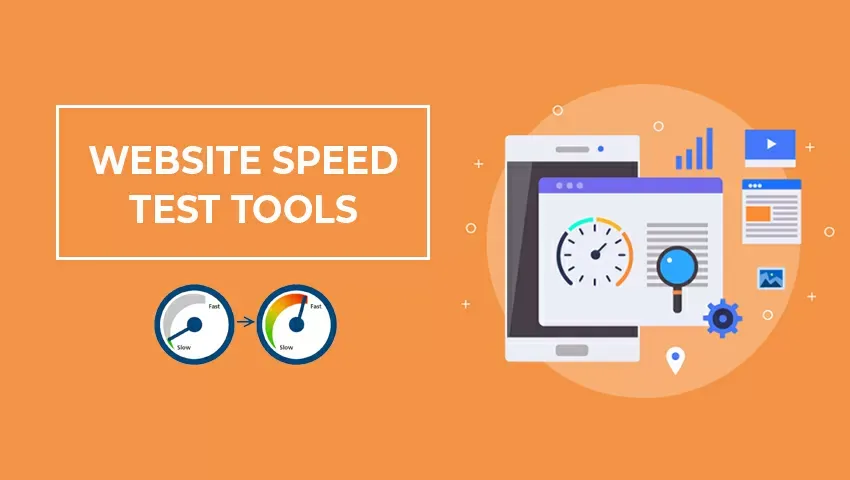
Optimising page speed can be the key to achieving higher engagement, lower bounce rates, and improved search visibility for your brand. As both users and search engines expect quick-loading pages, the right tools become essential allies in your digital strategy.
This article showcases the top 10 must-have page speed tools, including proven favourites like Google PageSpeed Insights and GTmetrix, plus innovative solutions such as Indexly. These tools are designed to help SEOs, digital marketers, business owners, and content creators pinpoint performance issues and implement effective fixes.
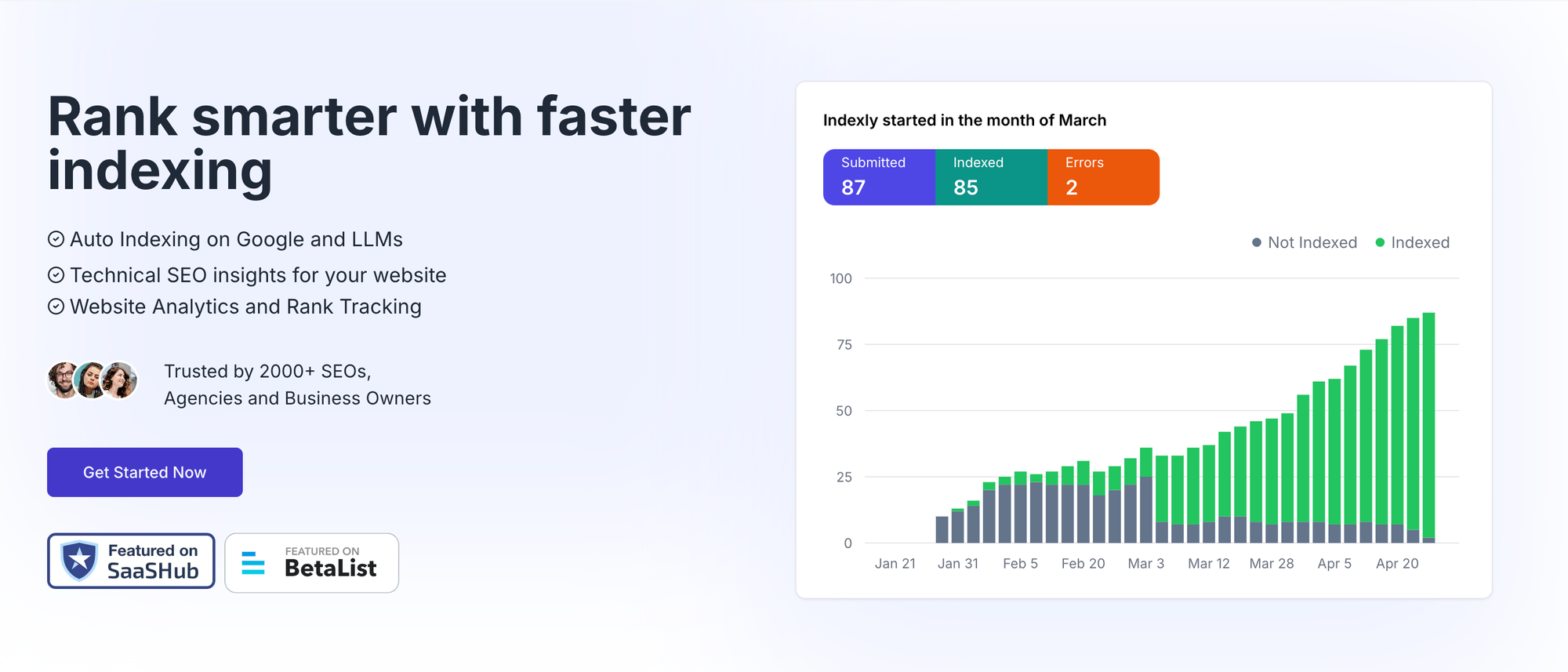
Free Page Speed Insights Tool
Get Actionable insights into how to improve your page speed performance
Ready to see which tools can make a measurable difference? Dive in to unlock insights that will help your site stand out and meet the expectations of both users and search engines.
"In the digital race for user attention, your website's speed might just be the accelerator pedal you didn't know was holding you back."
Further Read: https://searchatlas.com/blog/website-performance-tools/
This listicle breaks down the top tools in the industry—from free options like Google PageSpeed Insights and Lighthouse to full-stack monitoring suites like Sematext and Site24x7—so you can pick the best fit for your needs.
Each section covers:
- Features
- Pros & Cons
- Pricing
- Market Sentiment
1. Indexly PageSpeed Insights
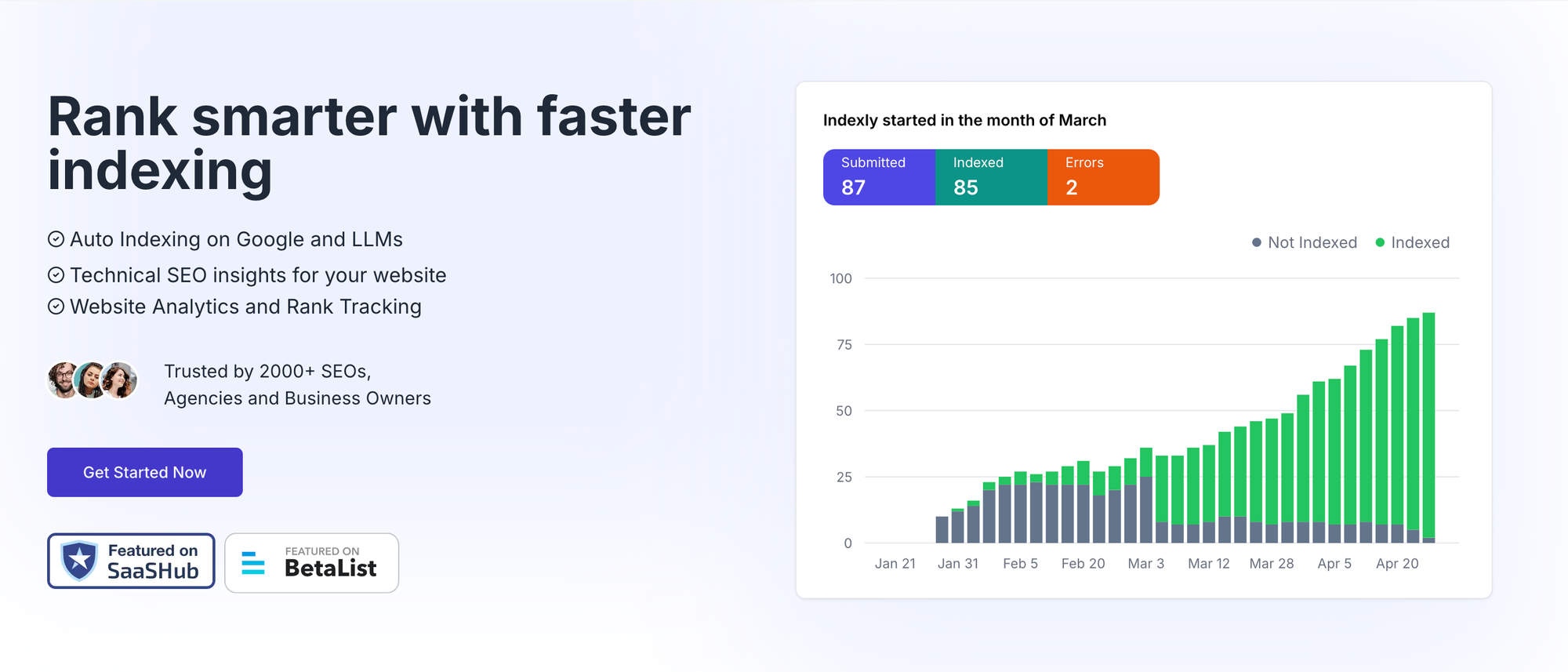
Indexly PageSpeed Insights is a modern page speed testing and monitoring tool designed for SEO professionals, agencies, and e-commerce sites. Unlike single-URL testers, it focuses on bulk testing, historical data tracking, and SEO integration, making it ideal for managing performance at scale.
Features
- Tests desktop and mobile speeds, Core Web Vitals (LCP, CLS, FID)
- Bulk URL testing for dozens/hundreds at once
- Historical performance tracking with change alerts
- Actionable SEO-focused suggestions
- API access for integrations and automation
Pros
- Great for agencies and large sites with bulk testing needs
- Historical data allows trend tracking and validation of fixes
- Integrated with Indexly’s broader SEO and indexing toolkit
- Easy-to-use dashboard with collaboration features
Cons
- Requires an account and potentially a paid plan
- Lab data may not include as much real-user Chrome UX info as Google
- API limits depend on pricing tier
Pricing
- Included in Indexly subscription plans
- Free tier with limited monthly tests
- Paid plans typically start at $19–29/month (higher quotas + API)
Market Sentiment
Early user commentary suggests solid satisfaction from SEO teams for the integrated workflow. Sites like saashub talk positively about Indexly.
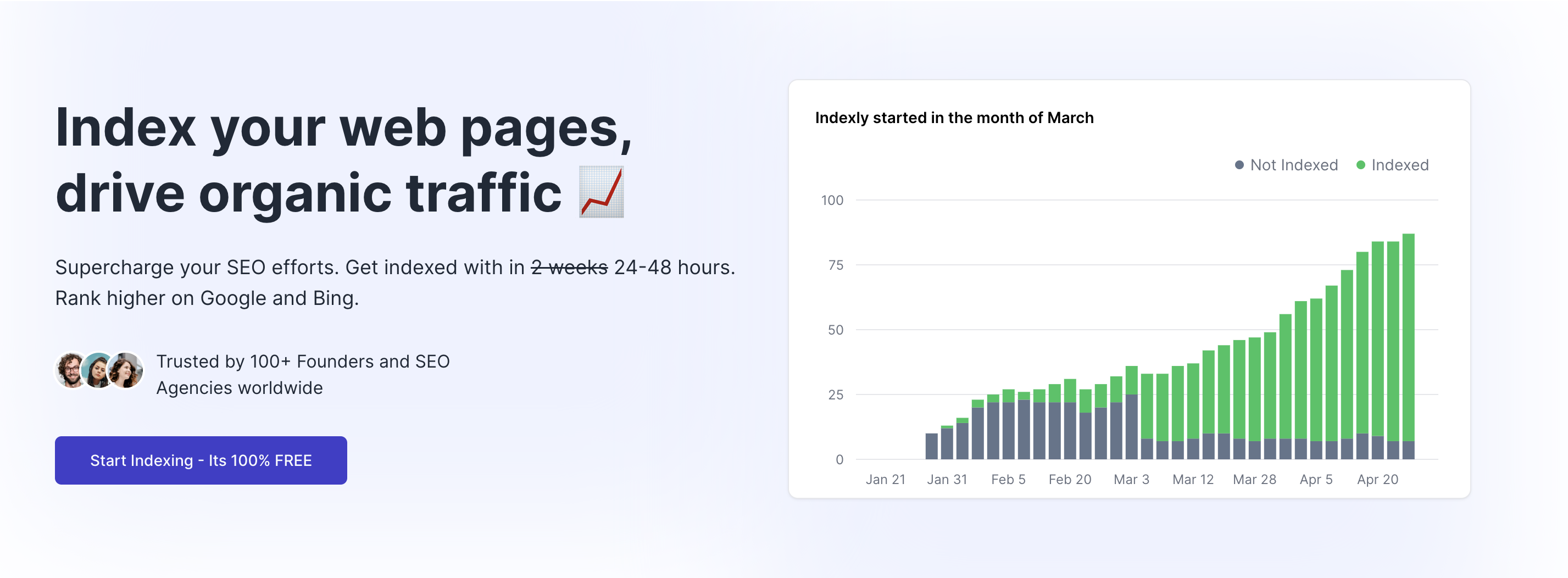
Indexly PSI
2. Google PageSpeed Insights
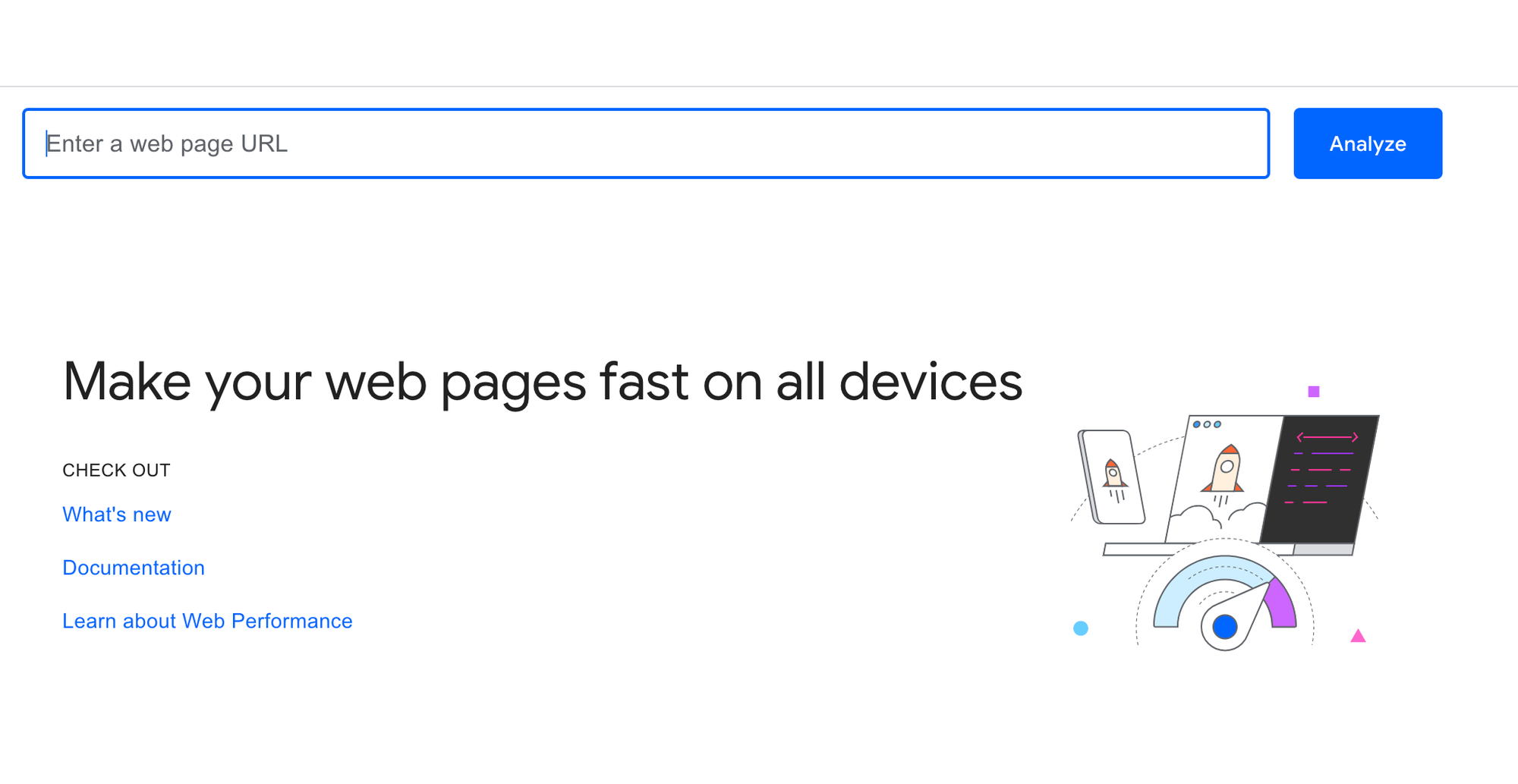
Google PageSpeed Insights (PSI) is the industry standard for quick performance audits and Core Web Vitals analysis. Backed by Google’s Lighthouse engine and Chrome UX Report (CrUX) dataset, it’s the most widely used free tool for testing website speed and identifying optimizations.
Features
- Free mobile & desktop speed scoring using Lighthouse and real-world Chrome UX Report (CrUX) data
- Detailed Core Web Vitals breakdown and lab diagnostics
- Audit recommendations for optimization
Pros
- 100% free, no signup needed
- Data backed by Google's CrUX dataset
- Trusted benchmark for SEO and technical teams
Cons
- Can only test one URL at a time—no bulk testing
- Historical tracking only available via Search Console integration
- No dashboard or collaboration tools—standalone output
- API requires Google Cloud credentials and quotas
Pricing
- Free
- PSI API usage is free within certain limits (via Google Cloud)
Market Sentiment
Widely accepted as the standard benchmark by SEO professionals—they rely on it for Core Web Vitals optimization and technical audits.

Google PSI
3. GTmetrix
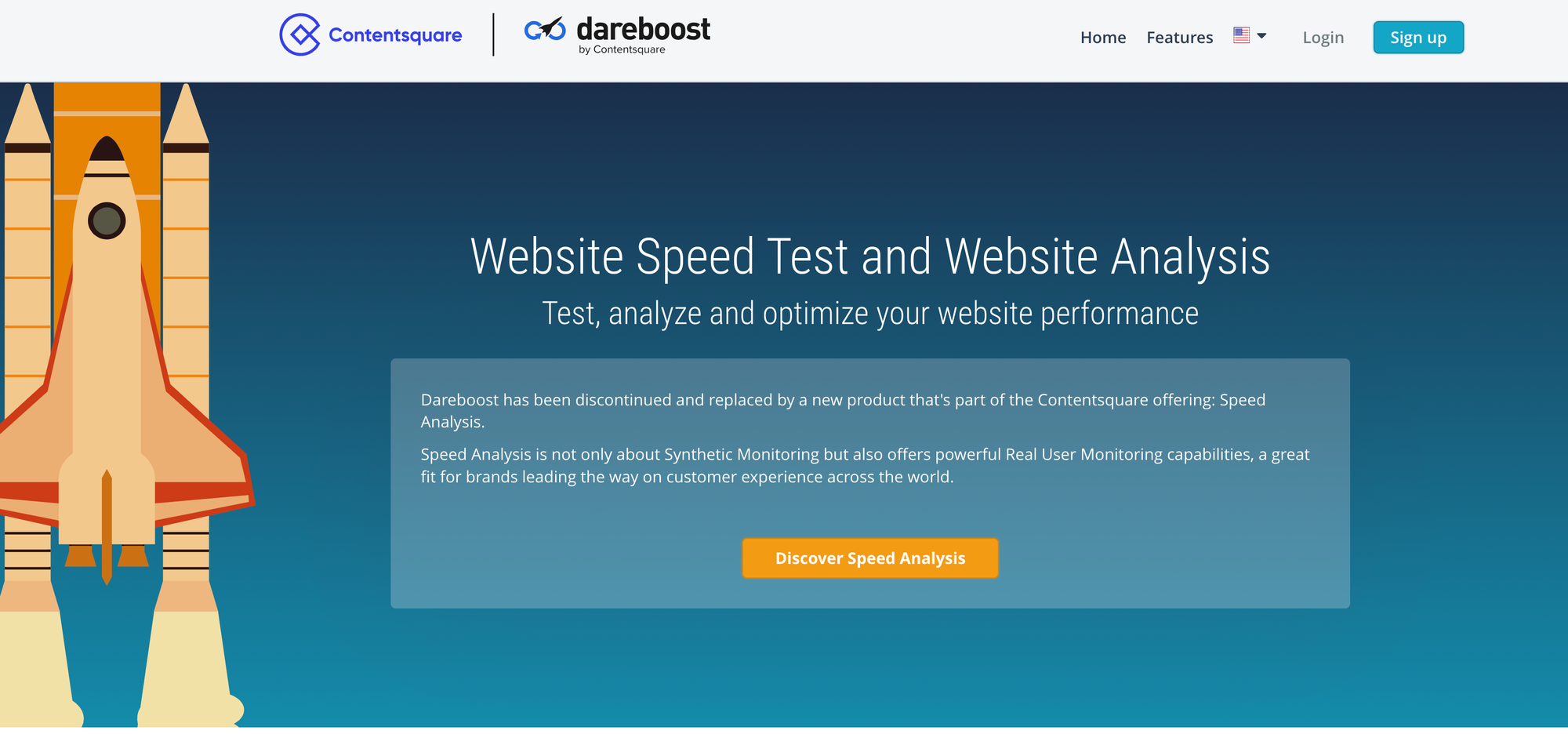
GTmetrix is one of the most popular third-party page speed testing tools. It combines Lighthouse audits with GTmetrix’s own waterfall analysis and scheduling features. It’s especially useful for users who want visual reports and automated trend tracking.
Features
- Uses Lighthouse lab data plus GTmetrix proprietary metrics
- Visual waterfall and resource breakdowns
- Scheduled testing for historical trend tracking
- On-demand and API testing support
Pros
- User-friendly interface with visual charts and recommendations
- Free users get up to 50 tests/week and 3-month of report history
- Pro plans unlock more test locations, mobile testing, API credits
- Automated reports great for team sharing
Cons
- Free plan limited to one monitored URL and basic mobile coverage
- Pro plans may be overkill for simple use cases
- Some users report overlap/redundancy with Lighthouse metrics
Pricing
- Free basic plan (up to 1 URL, 50 tests weekly)
- Micro: ~$4.25/mo ($51/yr)
- Solo: ~$12.33/mo ($148/yr)
- Growth & white-label plans: $20–40+/mo
Market Sentiment
Positive reviews highlight GTmetrix’s robust reporting. For example: “super handy…even the free account provides a ton of useful resources” and “great tool for analysing your website’s speed”

GTMetrix
4. Pingdom (SolarWinds Pingdom)
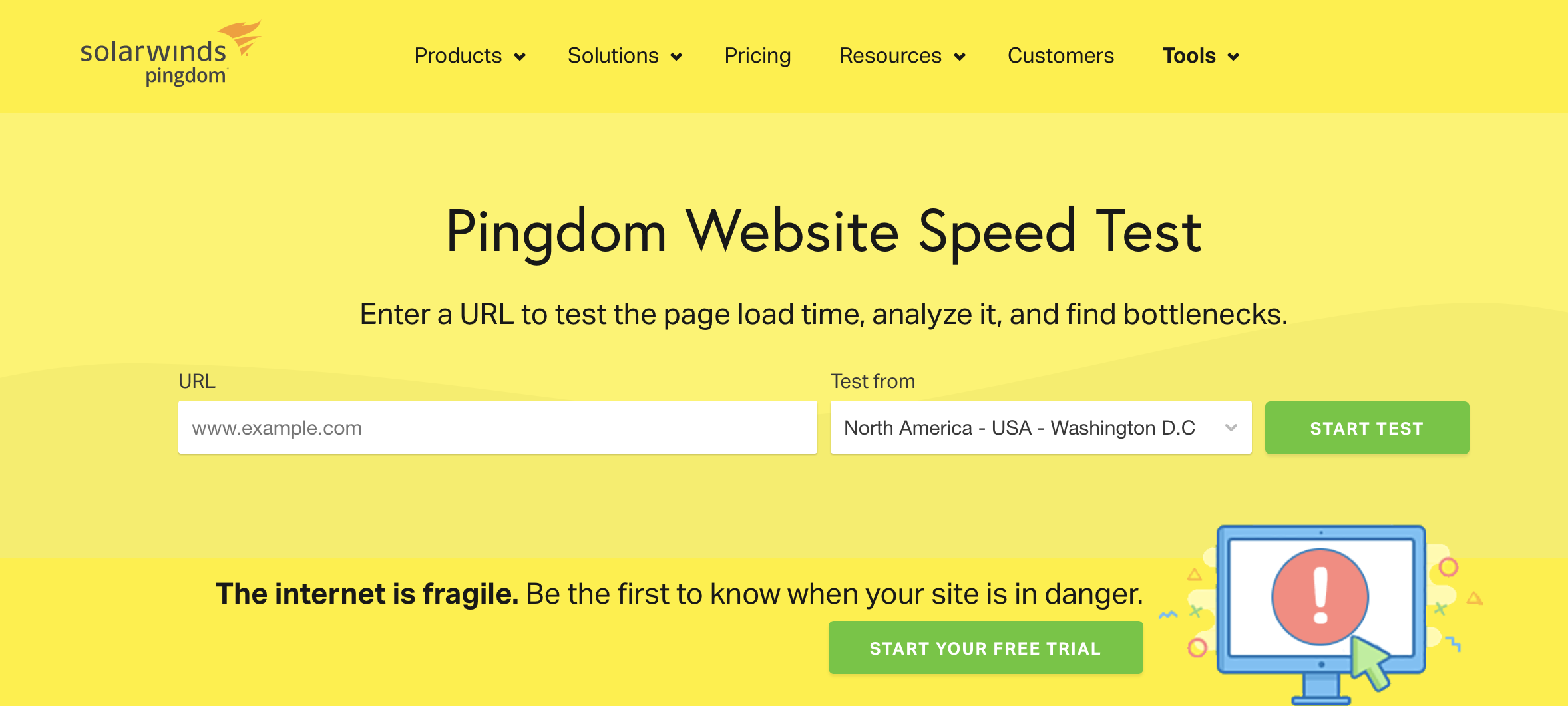
Pingdom by SolarWinds is a full-stack website monitoring platform that combines uptime tracking, synthetic page speed tests, and real user monitoring (RUM). It’s widely adopted by businesses that want 24/7 website monitoring with performance alerts.
Features
- Global synthetic and real user monitoring (RUM)
- Page speed tests from multiple global locations
- Visual waterfall charts and element-level breakdowns
- Alerts for outages and performance deviations
- Uptime, transaction, and real user monitoring
Pros
- Intuitive, dashboard‑driven interface WebPageTest
- Comprehensive set of monitoring packs: uptime, page speed, RUM
- Real‑client reviews say it's "affordable" and "easy to use" with strong support
- Offers root‑cause analysis tools
Cons
- Free tools limited in location choices and feature access
- Costs rise quickly with more monitors or micro‑services tracked
- Not as deep in Core Web Vitals diagnostics when compared to Lighthouse-based tools
Pricing
- Synthetic monitoring plan starts around $10/month for basic monitors
- Enterprise tiers scale to thousands of monitors at high volume usage levels (e.g., $18K+/mo)
Market Sentiment
Highly rated by enterprise teams and SMBs alike. It is praised for its support and transparency, though some find the interface aging.GetApp, Software Advice
Pingdom
5. WebPageTest
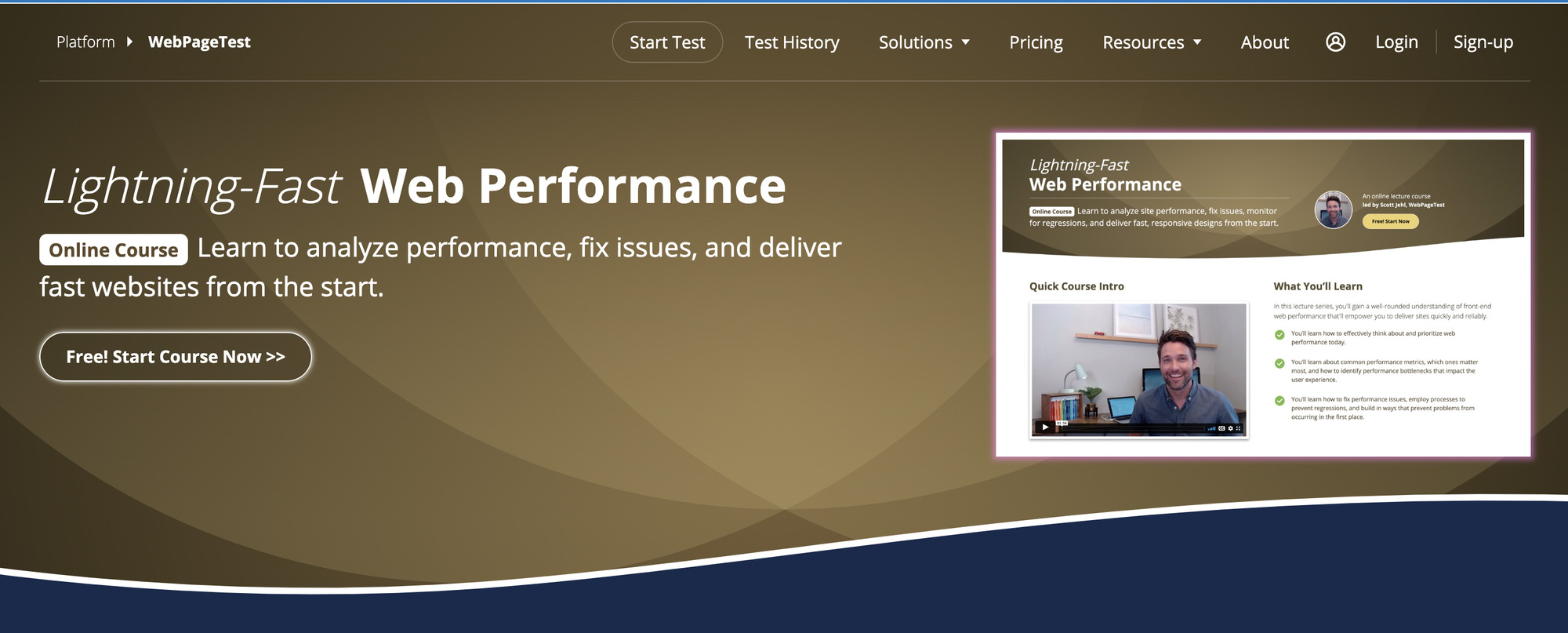
WebPageTest is an open-source performance testing platform known for its depth and flexibility. It’s a favorite of performance engineers and developers who need granular control over test environments and metrics.
Features
- Open-source, in-depth performance testing tool
- Highly customizable test settings (device, location, connection)
- Provides filmstrip view, waterfall, and advanced metrics (TTI, Speed Index)
- Automated monitoring via Pro/Expert plans
- API access and scheduling
Pros
- Comprehensive testing depth for performance engineers
- Precise control over environment settings—ideal for debugging
- Trusted community-driven tool
- Video/QoE filmstrip and custom metrics
Cons
- Steeper learning curve than simpler tools
- Free version lacks continuous monitoring—must upgrade for real-time dashboard Reddit
- Requires registration even for free use
Pricing
- Free plan (one-off tests with sign-up)
- Pro/Expert plans provide real‑time monitoring and dashboarding (subscription, pricing on request)
Market Sentiment
Used by web performance professionals for its detail and control. Community feedback underscores its diagnostic power though usability may feel technical.
6. Lighthouse (via Chrome DevTools & CLI)
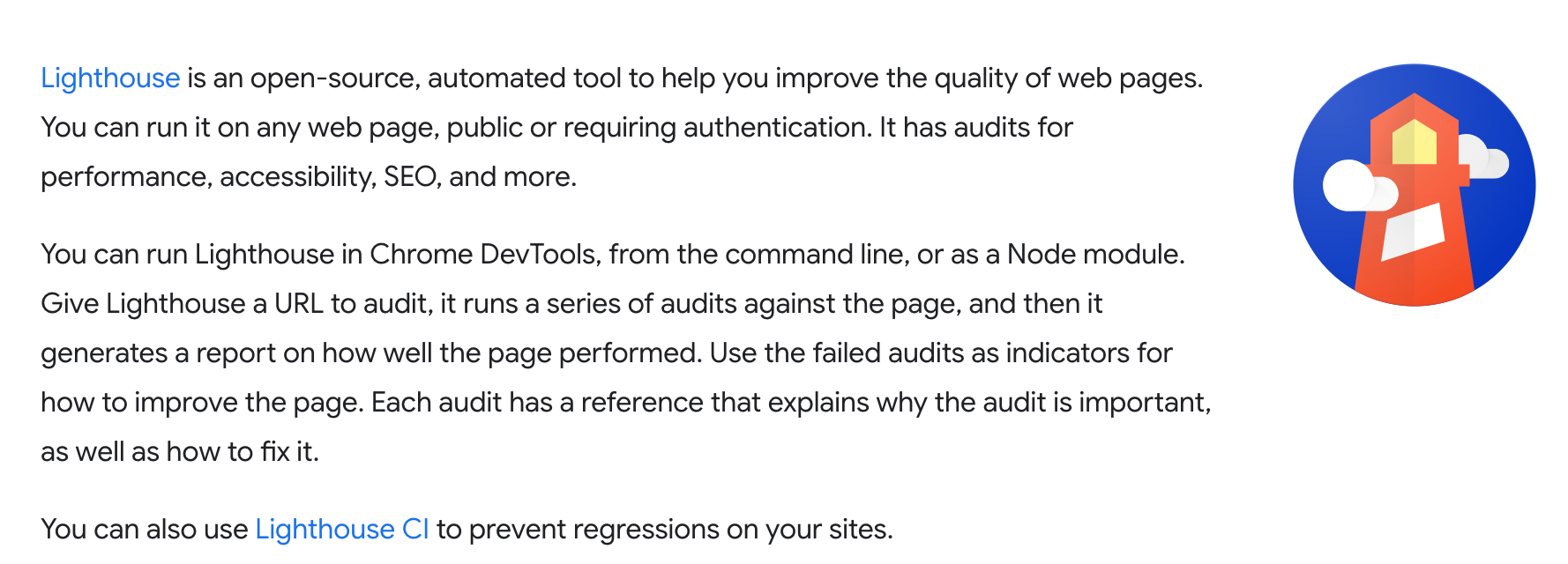
Lighthouse is Google’s open-source auditing tool, built into Chrome DevTools and available via CLI. It’s designed for developers who want to test performance, accessibility, SEO, and best practices all in one tool.
Features
- Open-source auditing tool built into Chrome DevTools and Node CLI
- Tests page performance, accessibility, SEO, best practices
- Produces Core Web Vitals metrics + lab scores
- Programmable CLI for CI/CD integration
Pros
- Deep audit coverage beyond speed—includes accessibility, SEO, security rules
- Built into browser tools—no signup or external site required
- Fully scriptable and integratable into pipelines
Cons
- Lab-based only—not real user data (unless paired with CrUX or RUM tools)
- Can be overwhelming for non‑technical users
- Single-site test only, no dashboarding or history
Pricing
- Free and open-source—built into Chrome and Node packages
Market Sentiment
Considered the industry gold standard for structured performance audits. Developers and SEO techies rely on it as the foundation of all speed testing.

Lighthouse
7. Sematext Synthetics
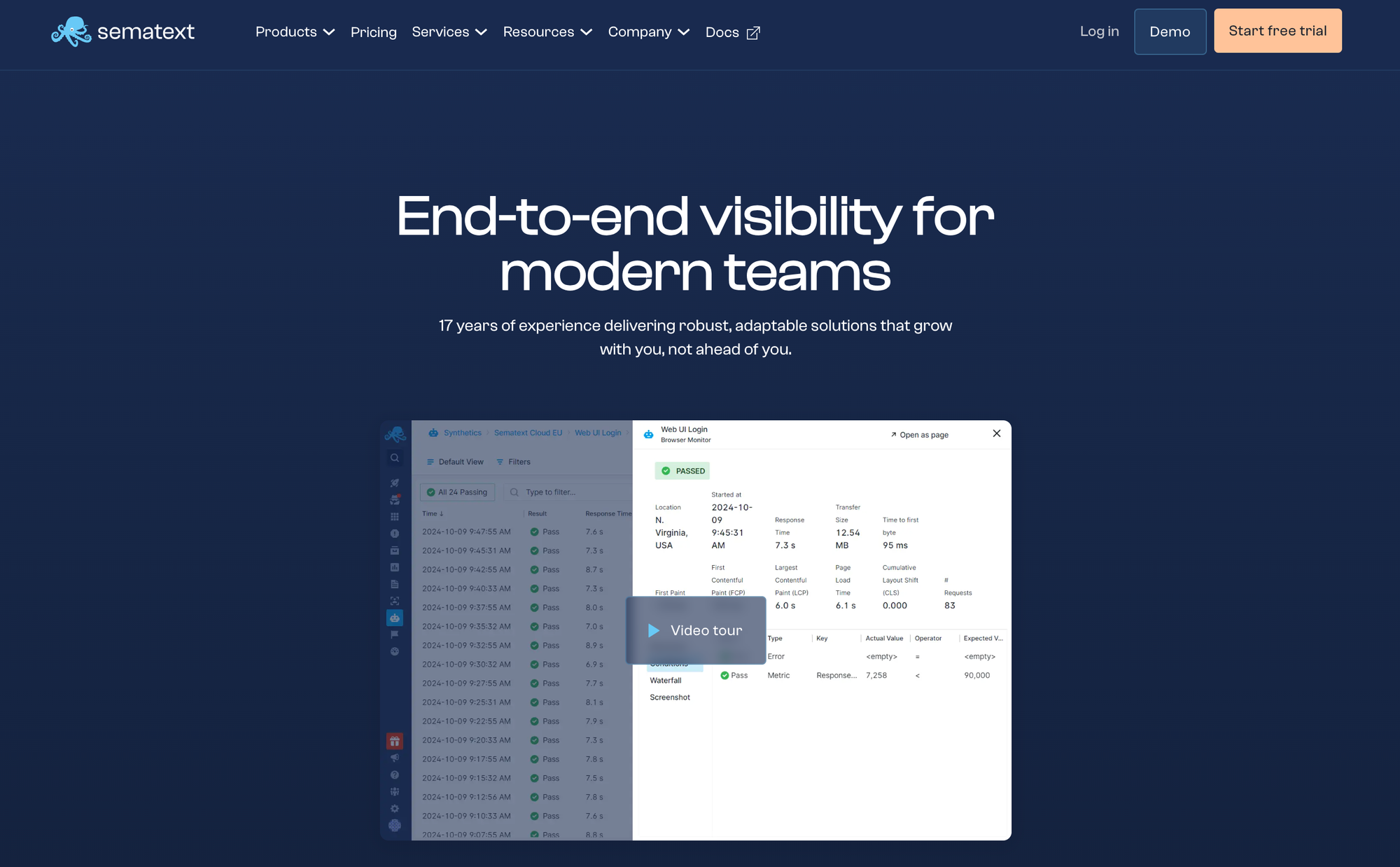
Sematext is a cloud-based monitoring suite with synthetic tests for websites, APIs, and apps. Its global monitoring network and alert integrations make it a strong choice for DevOps teams and enterprises.
Features
- Synthetic monitoring from global locations
- Checks page speed, uptime, errors, APIs, third-party resource latency
- Customizable alerts via email, Slack, PagerDuty, webhooks
- Dashboard visibility and integrations into Sematext Cloud ecosystem
Pros
- Flexible alerting & integration into DevOps workflows
- Support for browser-based checks and API calls
- Clean interface and great documentation
Cons
- Interface navigation can take extra clicks—minor UX quirk G2
- Fewer integrations with security tools noted in feedback Capterra
Pricing
- Offers free trial; paid plans vary depending on number of monitors and checks
- Pricing not always transparently published; contact sales for details
Market Sentiment
Generally positive among DevOps and engineering teams: “very easy to navigate,” “documentation is amazing,” though some wish for deeper integration with SIEM or security tools.
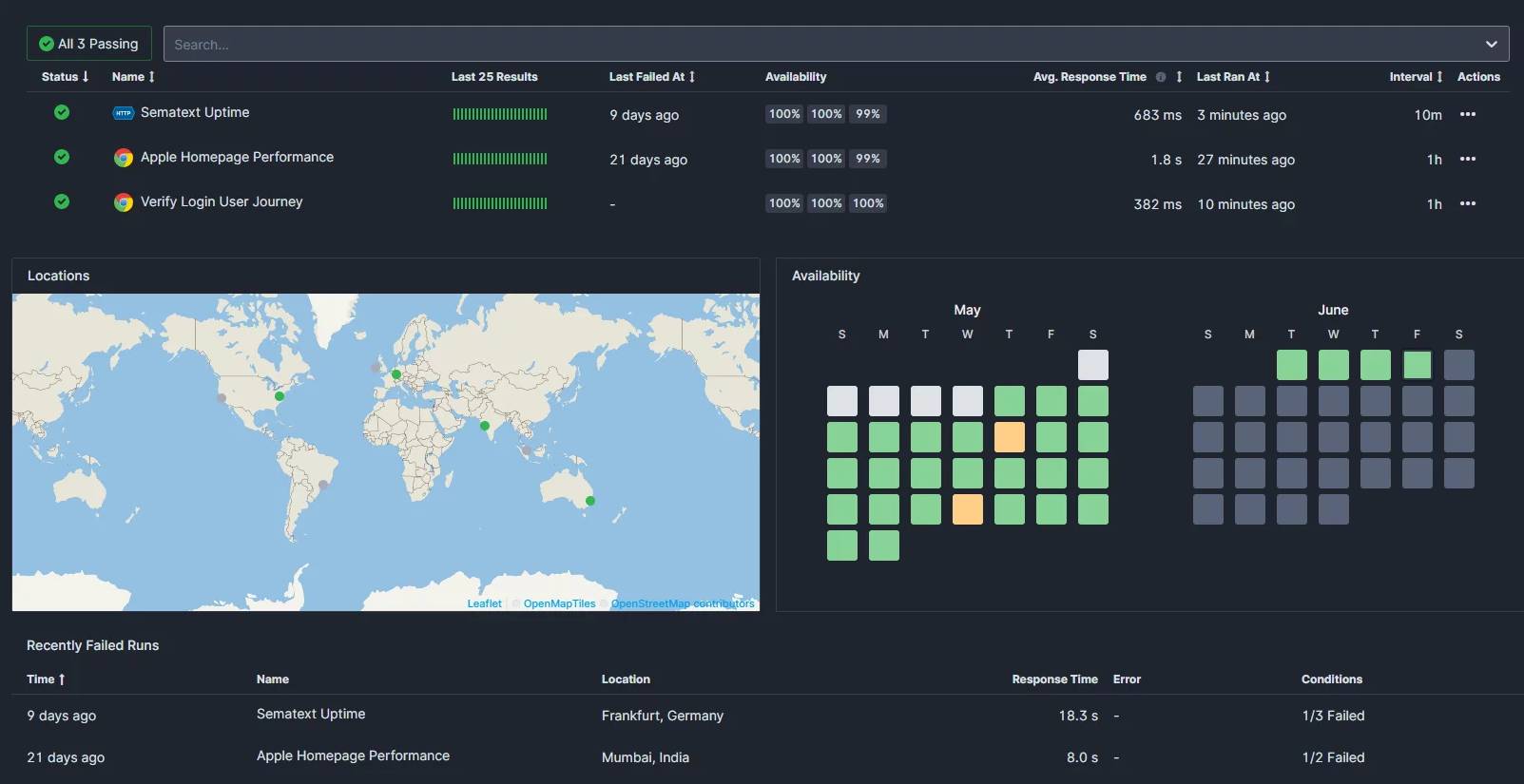
Sematext
8. Dareboost
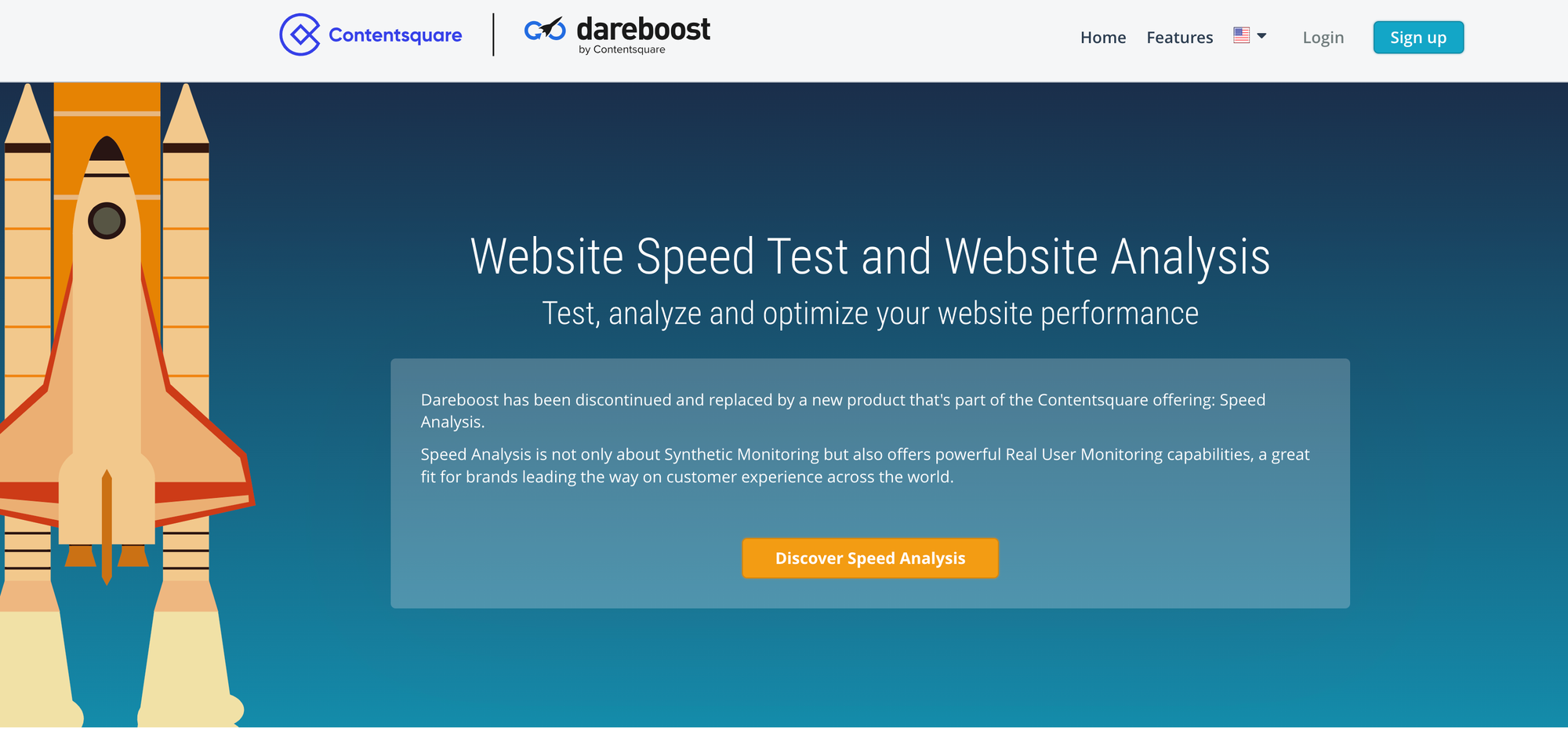
Dareboost is a website performance auditing tool focused on SEO, UX, and Core Web Vitals diagnostics. It’s popular with agencies and QA teams who need side-by-side comparisons and performance budgets.
Features
- Performance audits with network/device simulation support
- Side‑by‑side comparison of test runs
- Performance budget alerts and historical monitoring
- SEO, accessibility, security, and best practice diagnostics
Pros
- Customizable testing frequency and device/network emulation
- Clear dashboards, side‑by‑side comparisons and graphs
- Strong customer support
Cons
- Pricing may be high for small businesses or individual users
- Learning curve for first‑time users
Pricing
- Entry plan pricing starts ~€21/month per user (~US $21) itqlick.com
- Performance plan: ~$427/month for ~15 monitored pages, 30‑minute intervals, 12‑month retention SamBlogs
Market Sentiment
Mixed: praised for actionable insights and support, but budget perception varies—“efficient tool…providing actionable insights” and “comprehensive testing” but some find it costly on capex-limited budgets.
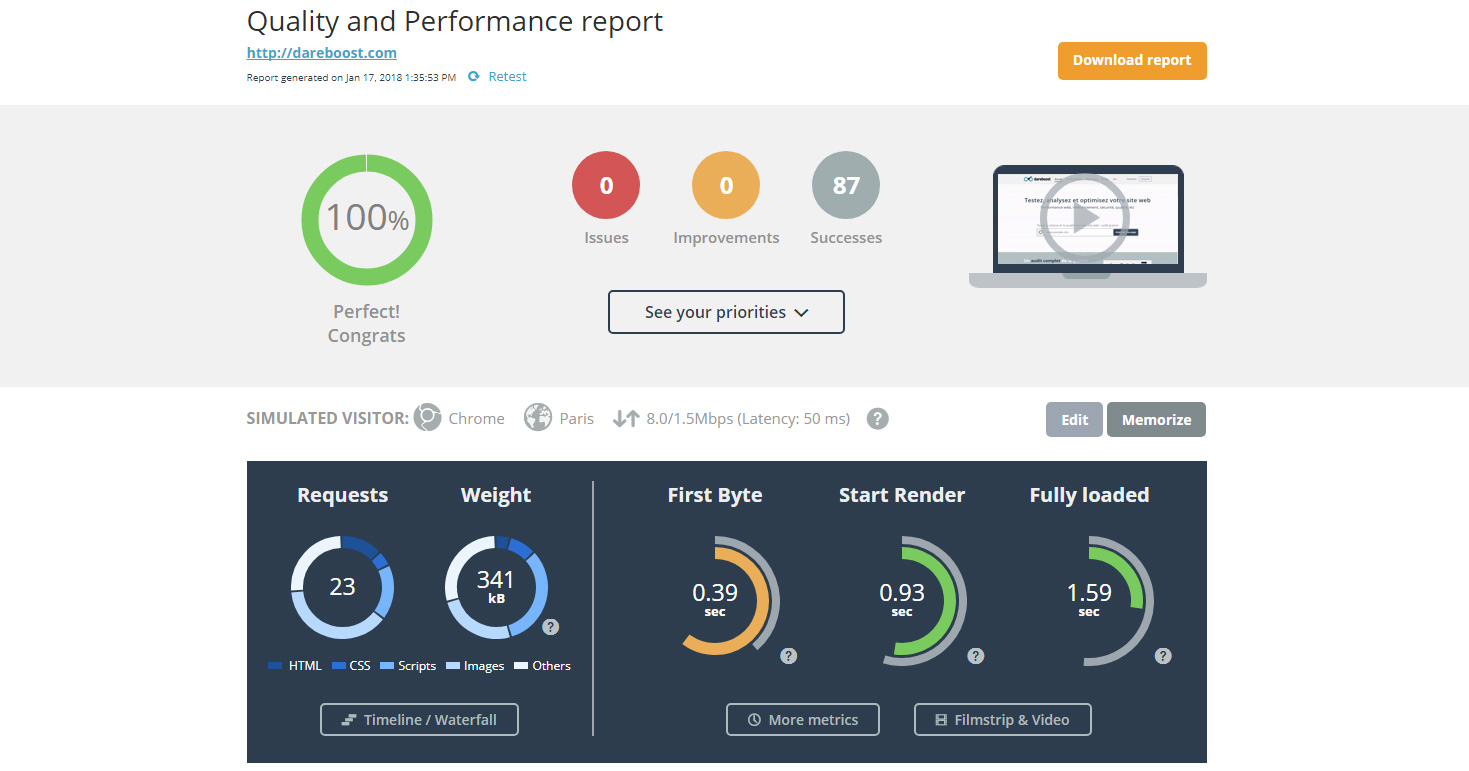
Dareboost
9. Site24x7 Website Speed Test & Monitoring
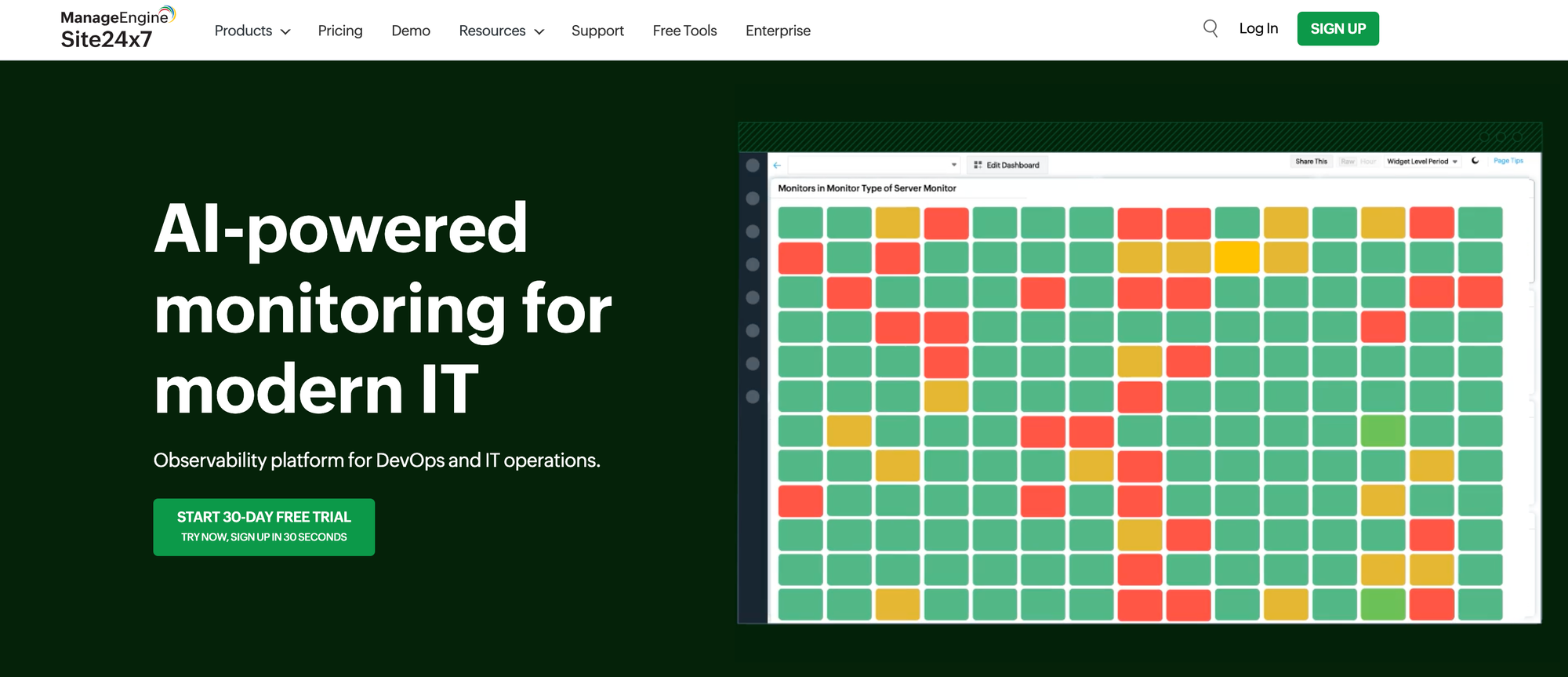
Site24x7 is an all-in-one monitoring platform covering page speed, uptime, RUM, and server monitoring. It’s built for businesses that want comprehensive visibility into web and infrastructure performance.
Features
- Free tools for on-demand speed checks and waterfall analysis
- Real user monitoring (RUM), synthetic testing, uptime checks from 130+ global locations
- Comprehensive dashboard for web, application, server, and network monitoring
- Defacement monitoring and SLA reporting
Pros
- Extremely broad feature set—even free tools cover many use cases
- Affordable entry plans (~$25/month for full monitoring suite)
- Reliable and easy to deploy on web & mobile
Cons
- To access full range of monitoring, you need the all‑in‑one plan (~$35/month or more) dnsstuff.com
- Not ideal if you need unlimited page‑speed tests—extra costs apply
Market Sentiment
Well‑received in SMB and mid‑market contexts. Cited as “reliable and very easy to deploy” and “excellent tool” for holistic monitoring.

10. Uptrends Website Speed Test
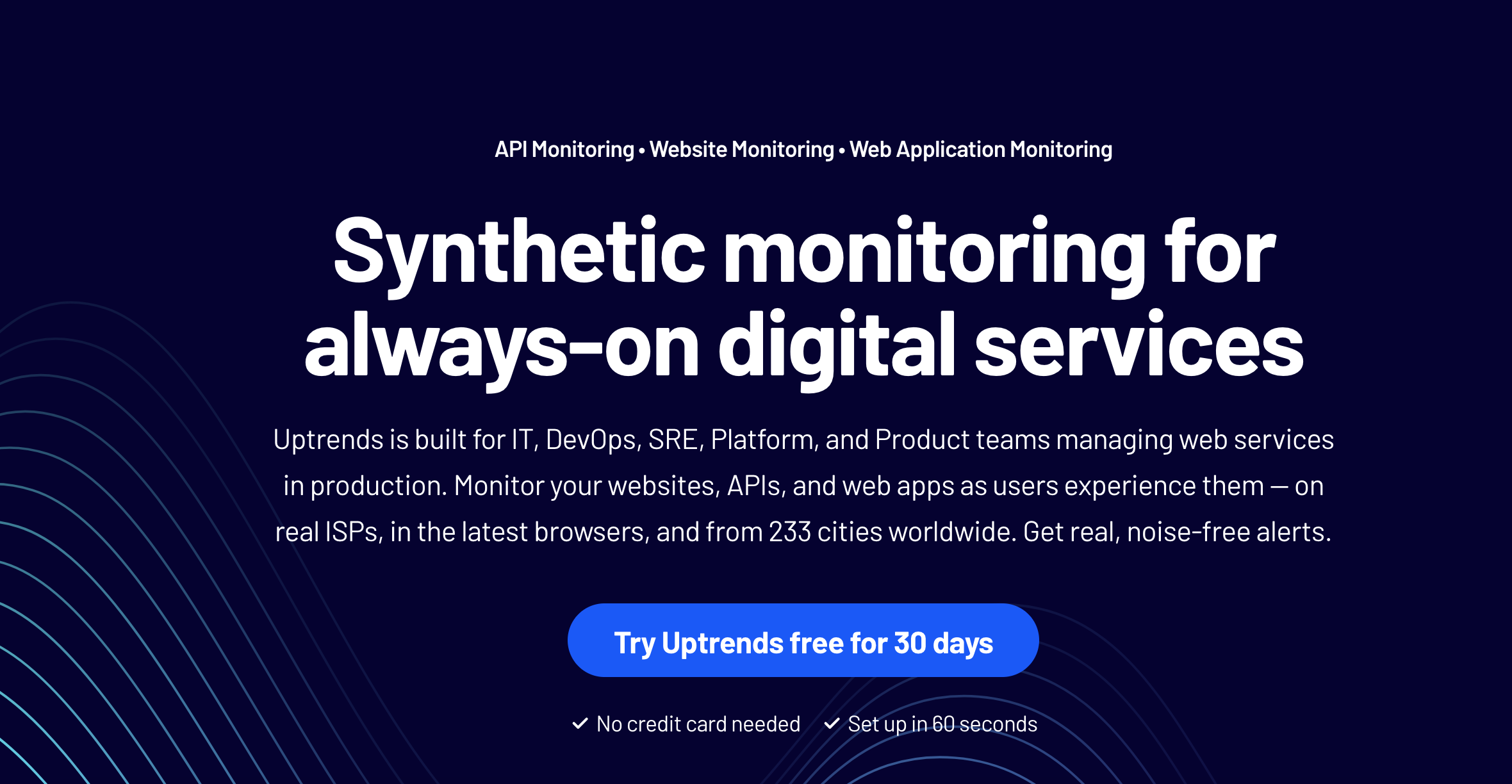
Uptrends offers a free website speed test tool plus a professional monitoring suite. Known for its global checkpoints and waterfall reports, it’s ideal for teams that want both quick tests and continuous monitoring.
Features
- Free browser-based speed test with waterfall reports, Core Web Vitals, and comparison across Chrome/Edge and network throttling
- Option for 233 global checkpoints for monitoring
- Synthetic transaction monitoring and uptime checks in full product
- Alerts, dashboards, and API access
Pros
- Unlimited depth testing and insights even in free version
- Rich global checkpoint network for accurate location-based testing
- Verified reviews praise ease-of-use and prompt alerting when issues arise
Cons
- Feature‑based pricing could limit small users wanting broad coverage
- UI may feel dated; some reviews note desire for modernization
Pricing
- Free speed test tool available
- Full monitoring plans are modular; pay per feature set, starting around typical SMB pricing (estimate $20+/mo)
Market Sentiment
Highly praised for reliability and real-time monitoring: “very important software…easy to use” and rated 5/5 in multiple categories
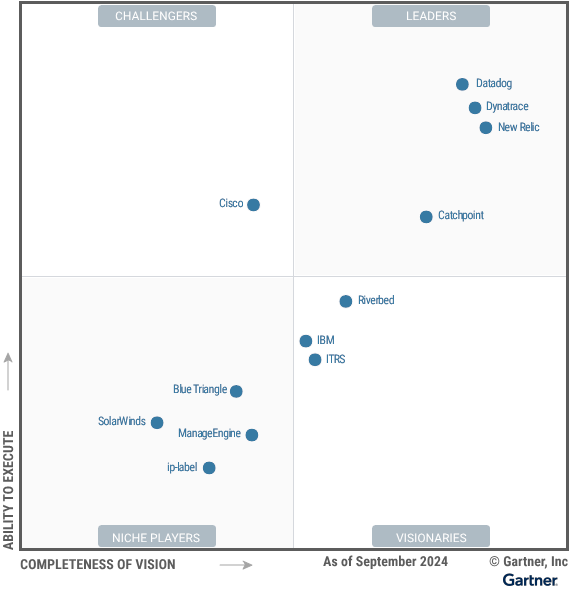
Uptrends
Conclusion
Consistent website speed testing remains crucial for any business aiming to stay competitive online. Continuing to monitor your web performance ensures you don't miss hidden bottlenecks that might be affecting user satisfaction or search ranking.
By periodically checking site load times and responsiveness with several trusted speed testing tools, teams are better prepared to diagnose issues from different perspectives and anticipate the needs of evolving search engine algorithms.
Here is how each tool fares against the others.
Best by Use Case
- Quick one-off tests, free → Google PageSpeed Insights, Lighthouse
- Visual, waterfall-based analysis → GTmetrix, Pingdom
- Professional performance debugging → WebPageTest
- Sitewide historical monitoring & team collaboration → Indexly, Sematext, Site24x7, Uptrends
- Sensor-driven, customizable budgets → Dareboost
Summary Table
| Tool | Best For | Strengths | Limitations |
|---|---|---|---|
| Google PSI & Lighthouse | Single-page audits, free Core Web Vitals | Free, trusted, easy to use | No bulk monitoring or dashboards |
| GTmetrix | Visual audits, trend tracking | Easy interface, planning tools | Limited free tier & mobile coverage |
| Pingdom | Enterprise uptime + speed monitoring | Full synthetic/RUM support | Can be costly at scale |
| WebPageTest | Deep performance diagnostics | Highly customizable, granular detail | Steep learning curve |
| Indexly PSI | Bulk SEO performance + historical tracking | SEO integration and bulk reporting | Account required, limited public reviews |
| Sematext Synthetics | DevOps integrations + alert workflows | Custom alerts, global coverage | UX quirks, fewer security integrations |
| Dareboost | Performance auditing + budgeting | Device emulation, side-by-side tests | Premium pricing, learning curve |
| Site24x7 | All‑in‑one site & infra monitoring | Broad features, affordable entry plan | Limits if unlimited testing needed |
| Uptrends | Modular monitoring + free deep testing | Global locations, waterfall insights | Feature-based pricing may limit SMBs |
🌟 Final Takeaways
- For free entry-level testing, Google PageSpeed Insights and Lighthouse are unbeatable.
- If you need bulk URL testing and historical performance analysis (e.g. agencies or SEO teams), go with Indexly or Site24x7.
- For detailed diagnostics and custom testing (e.g. performance engineers), WebPageTest is unmatched—even though it requires more technical skill.
- Pingdom, Sematext, and Uptrends excel when you want real user monitoring, alerts, and dashboards across uptime and speed monitoring.
- Dareboost is a strong choice if you're performance-focused and don't mind the cost for advanced insights and comparisons.
Choose the tool(s) that best align with your workflow and scale—combining free audits with monitoring tools often yields a balanced approach.
FAQs
What is a page speed tool and why is it important for SEO?
Page speed tools are specialized platforms designed to analyze how quickly a web page loads and what factors impact its performance. By utilizing these tools, webmasters and SEOs can pinpoint bottlenecks such as large images, inefficient scripts, or excessive server requests.
From an SEO perspective, site speed is a confirmed ranking factor for major search engines like Google. Improved load times not only boost your site's standings but also enhance user engagement by reducing bounce rates. As online competition intensifies, performance optimizations gained through page speed tools can result in meaningful increases in visibility and user retention.
Platforms like Indexly combine page speed insights with actionable recommendations, ensuring that your technical SEO efforts have a direct impact on both search rankings and user experience.
How often should I audit my website’s speed?
Routine audits are necessary to maintain optimal website performance. As digital properties grow and content gets updated, new scripts, plugins, or design changes can unintentionally slow your site down. Best practice is to run a comprehensive speed audit at least once per quarter, or immediately after a major website update.
Indexly's tools make ongoing audits straightforward, alerting you promptly to changes that could jeopardize the user experience or diminish your SEO advantage.
Can a page speed tool improve my site’s indexing rate?
Faster-loading pages lead to more efficient crawling by search engine bots like Googlebot, potentially speeding up indexing. Search engines allocate a crawl budget to every site, and sluggish pages consume more of that budget, leaving less capacity for new or updated content to be discovered quickly.
Indexly integrates speed audits right alongside its indexing optimization features, giving you a direct line of sight between performance improvements and better search presence.
Which tool is best for agency reporting and client management?
Agency environments demand robust reporting features and seamless workflow integration. The ideal page speed tool for agencies should support multi-client management, detailed white-label reporting, and clear progress tracking.
Indexly is built with agencies in mind, delivering not just page speed analytics but also comprehensive SEO audits and client-friendly dashboards. Teams can generate automated, branded reports to keep clients informed and engaged.
These features streamline communications, boost client transparency, and help agencies demonstrate ongoing value while managing large portfolios efficiently.
How does Indexly differ from other page speed testing solutions?
Unlike many standalone speed checkers, Indexly delivers a holistic solution. Beyond traditional metrics, Indexly connects speed data to broader indexing and search optimization strategies, providing recommendations grounded in real-world SEO priorities.
Its platform empowers users to track every aspect of websites affecting both crawlability and user experience. This integration helps SEOs find correlations between speed, on-page elements, and search visibility—delivering insights that inform actionable strategies.
The unified workflow—from audit to actionable insights—sets Indexly apart, offering not just diagnostics but also context for driving business growth.
What are the most critical metrics to monitor for user experience?
Key metrics for user experience include Largest Contentful Paint (LCP), First Input Delay (FID), and Cumulative Layout Shift (CLS). LCP measures the time it takes for the main content to load, which directly affects perceived speed.
FID assesses how quickly users can interact with your website, important for engagement and conversions. CLS quantifies how much the page content shifts during loading, ensuring a visually stable experience for visitors.
Monitoring these, along with overall loading times and server response data, provides a comprehensive view of site performance. Indexly’s insights focus on these core metrics, making it easier to prioritize improvements that matter most for retaining users and supporting SEO growth.








